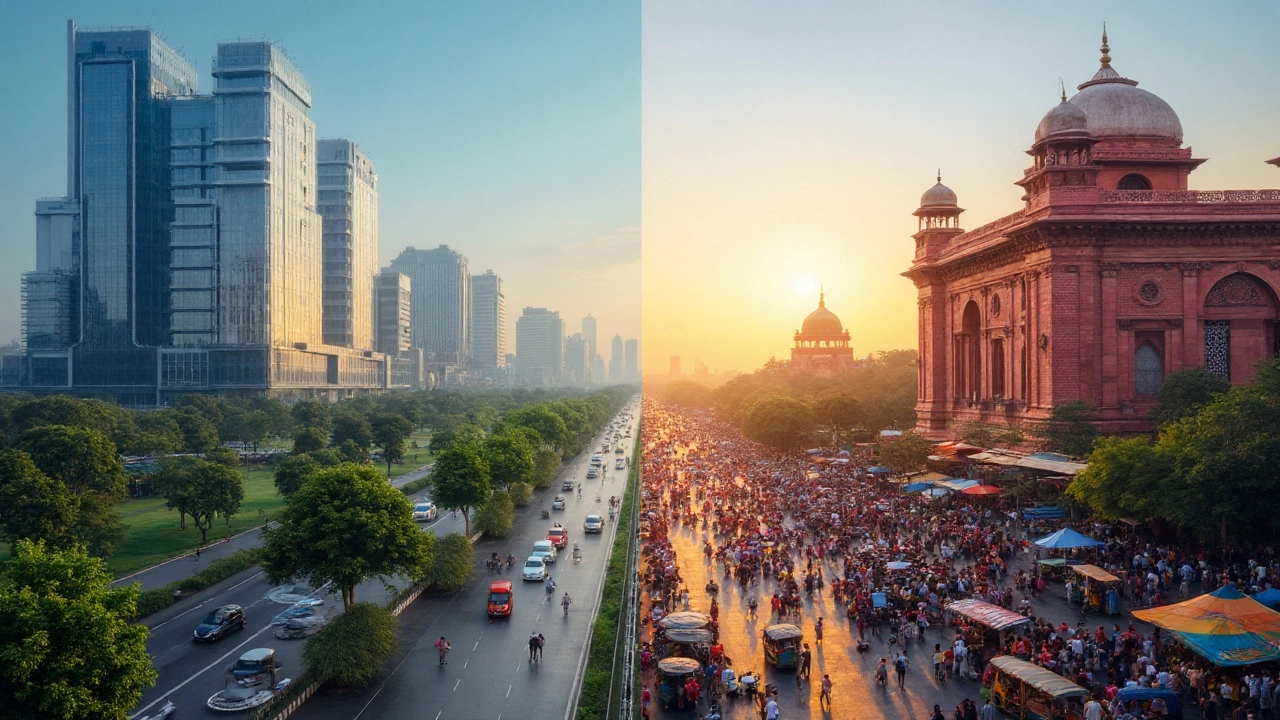
Explore a data‑backed look at whether South India is richer than North India, comparing GDP, per‑capita income, HDI, FDI, literacy and more.
When working with GDP per capita India, the average economic output per person measured in Indian rupees. Also known as per capita income, it reflects the country’s overall wealth and living standards. This figure isn’t just a statistic – it tells you how much a typical Indian can spend on food, transport, or a night in a hotel. Think of it as the economic backdrop that influences everything from city skyline construction to the price of a cup of chai on a roadside stall.
Another key player is Economic growth, the rate at which a country’s total output expands year over year. Economic growth drives the rise in GDP per capita India, especially when new industries like tech, renewable energy, and tourism add value. When growth speeds up, wages tend to rise, and you’ll notice more upscale restaurants and better infrastructure in popular destinations.
Closely tied to both is Living standards, the overall quality of life measured by health, education, and purchasing power. Higher GDP per capita India usually means better access to healthcare, cleaner water, and stronger social services. For travelers, this translates into safer streets, reliable internet, and more diverse food options – all of which shape the itinerary you’ll feel comfortable following.
The tourism industry leans heavily on these economic signals. A rising GDP per capita India often means domestic travelers have more disposable income, boosting demand for weekend getaways, heritage tours, and luxury stays. Meanwhile, foreign visitors see the country’s affordability relative to their own home economies, making India a go‑to spot for budget‑friendly adventures without compromising on experience.
These entities interact in clear ways: GDP per capita India encompasses living standards, Economic growth fuels GDP per capita India, and Tourism industry benefits from higher living standards. Understanding this web helps you gauge when to book a trip, how much you might spend, and what kind of experiences are on offer.
Below you’ll find articles that unpack specific travel angles – from safety tips in 2025 to how the cost of a US dollar compares with the rupee, from the most affordable months to visit iconic sites to the real price of luxury train journeys. Each piece connects back to the economic backdrop we just explored, giving you a full picture of how GDP per capita India shapes pricing, safety, and overall traveler satisfaction.
Scroll down to discover practical advice, up‑to‑date cost breakdowns, and insider tips that let you plan smarter, spend wisely, and enjoy the diverse wonders India offers – all grounded in the economic reality of the country.

Explore a data‑backed look at whether South India is richer than North India, comparing GDP, per‑capita income, HDI, FDI, literacy and more.